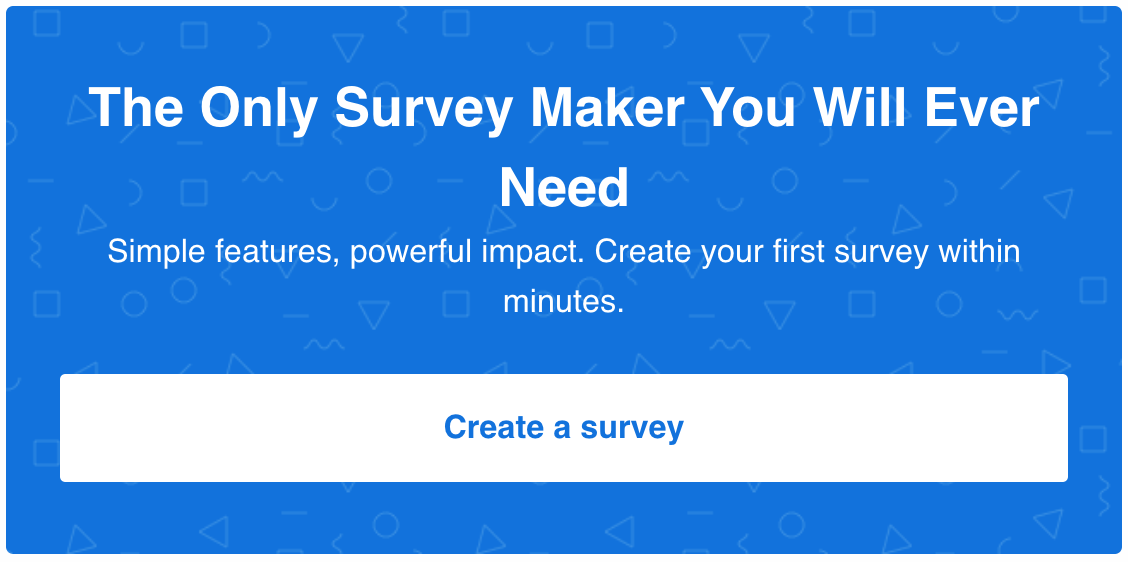Online surveys are a great way to collect opinions and feedback from your customers or audience. They are not limited to this use – you can use surveys to get more insight into your market opportunities or how you compare against your competitors. However, if not done right, surveys lead to unreliable results, which in turn lead to bad decisions.
In this guide, we will show you how to make a survey that is clear, engaging, fitting with your objective, and capable of delivering reliable results.
Why make an online survey
Online surveys provide you with quite a few benefits – they are quick and easy to make, and there are virtually no expenses of their distribution. Second, they allow you plenty of freedom in terms of design, content chunking, type of question, and interactive elements that will make even long surveys entertaining.
Respondents engage with them from the comfort of their home, without time limitations or obligations to turn them in or mail them.
As online survey response rates may vary and sometimes can be under 1%, your survey needs to meet a few requirements to make sure your respondents answer all the questions. It needs to be in line with their interests and confidentiality regulations, and it is not bad if you can offer the survey respondents some incentive. But more about that later.
Let us first show you how you can easily make a good survey in just 6 easy steps.
How to make a survey in 6 easy steps
Creating a survey is simple and can be done in only a few minutes. That being said, this is not going to be one of those endless tutorials – here are the 6 basic steps you need to take:
1. Choose the right survey maker
How to make a survey people actually want to take? The first step is to make sure you’re using the right survey maker for your needs.
2. Pick a survey template
The best survey tools will also let you choose from a wide variety of survey templates – professionally designed, pre-filled with content for inspiration, and easily customizable to match your branding and fit your data collection needs.
Need to learn more about your audience – create a demographic survey (and get inspired by 100 demographic questions).
Wondering if your customers would recommend you? Choose the NPS (net promoter score) survey template and join Fortune 500 companies such as General Motors, Delta Air Lines, Procter & Gamble, and Lego who all use NPS to measure customer satisfaction.
Or do a deep-dive with a product survey or market research survey.


Not a fan of templates? If you want the survey design to be entirely your own creation, you can easily build one from scratch using the intuitive content builder.
3. Build a survey from scratch
There are two types of logic you can use to create a survey – outcome or scoring.
In other words, you can either create surveys where respondents receive results based on the outcome with the most answers selected or you can assign a score value to each answer so they receive results based on their score range.
Just select your preferred type and the flow will take you to our intuitive content builder.
4. Add different elements to your survey
Starting screen
A starting screen or cover page is the first thing your respondents see when the survey reaches them. This is your opportunity to get them interested with an alluring image, snappy title, inviting CTA, and a short description letting them know what the survey is about.
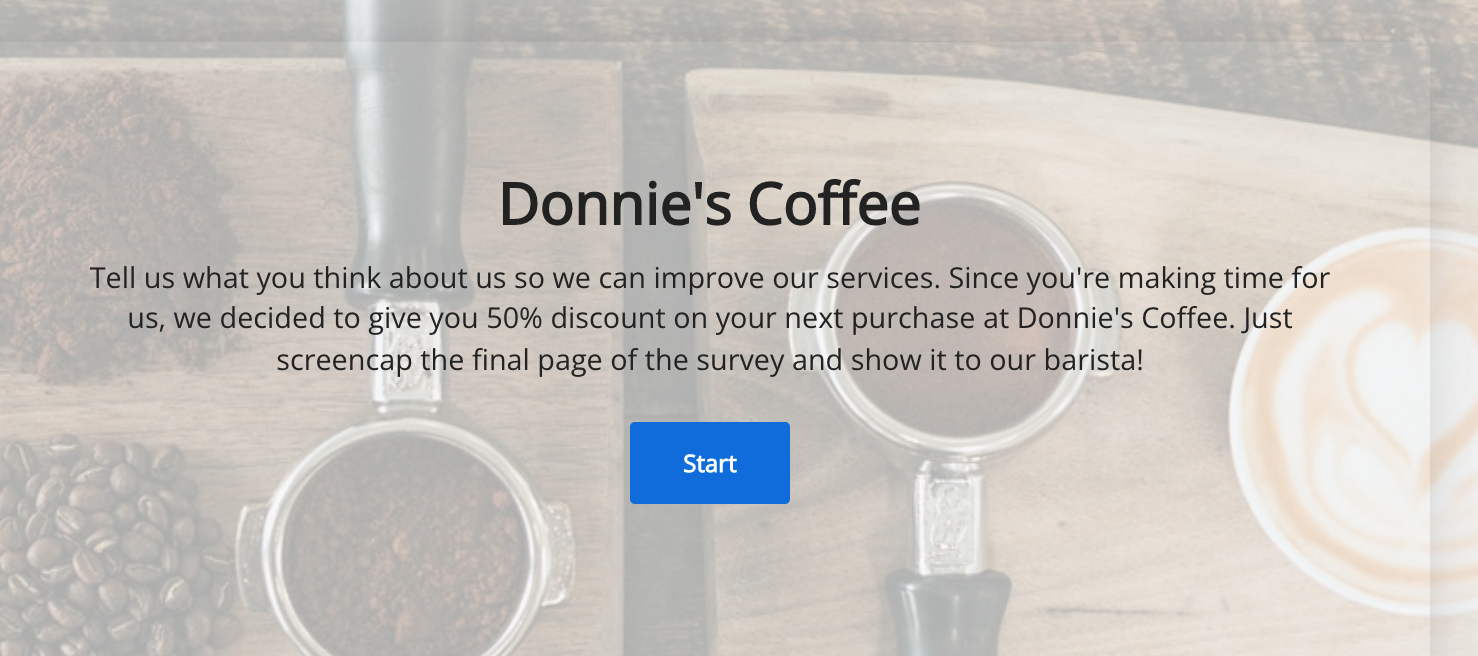

The example above contains a small incentive as well, as a great way to motivate the respondents.
If you’re looking for additional inspiration, here are some survey introduction examples to get you started!
Survey questions
How to make a survey engaging, purposeful, and reliable at the same time? Ask the right survey questions, of course.
With LeadQuizzes, you can add many different question types to your survey.
Most marketers love to use quantitative and close-ended survey questions. They allow them to segment their customers into several groups and adjust their marketing strategy for each of them. For example, you can start by determining how often people buy your product or use your service.
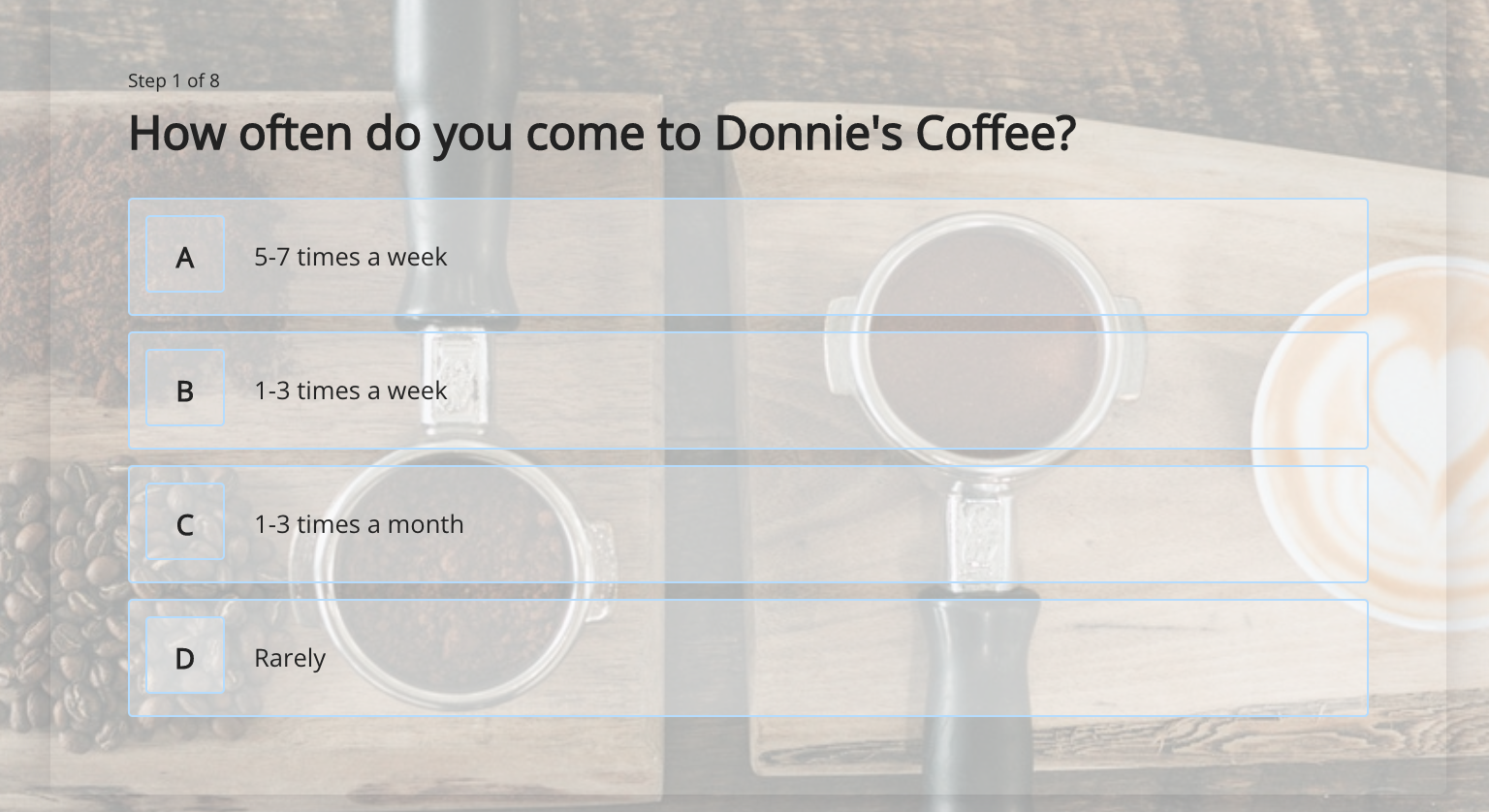

After that, you can determine how pleased the customer is with your product. Leave the “how” and “why” questions for later – first, it is important to nail down the sheer number of satisfied customers.
Based on the answers, you can use logic branching and create different follow-up questions for different answers. For example, the respondents who didn’t give your product an excellent score can be taken to this question:
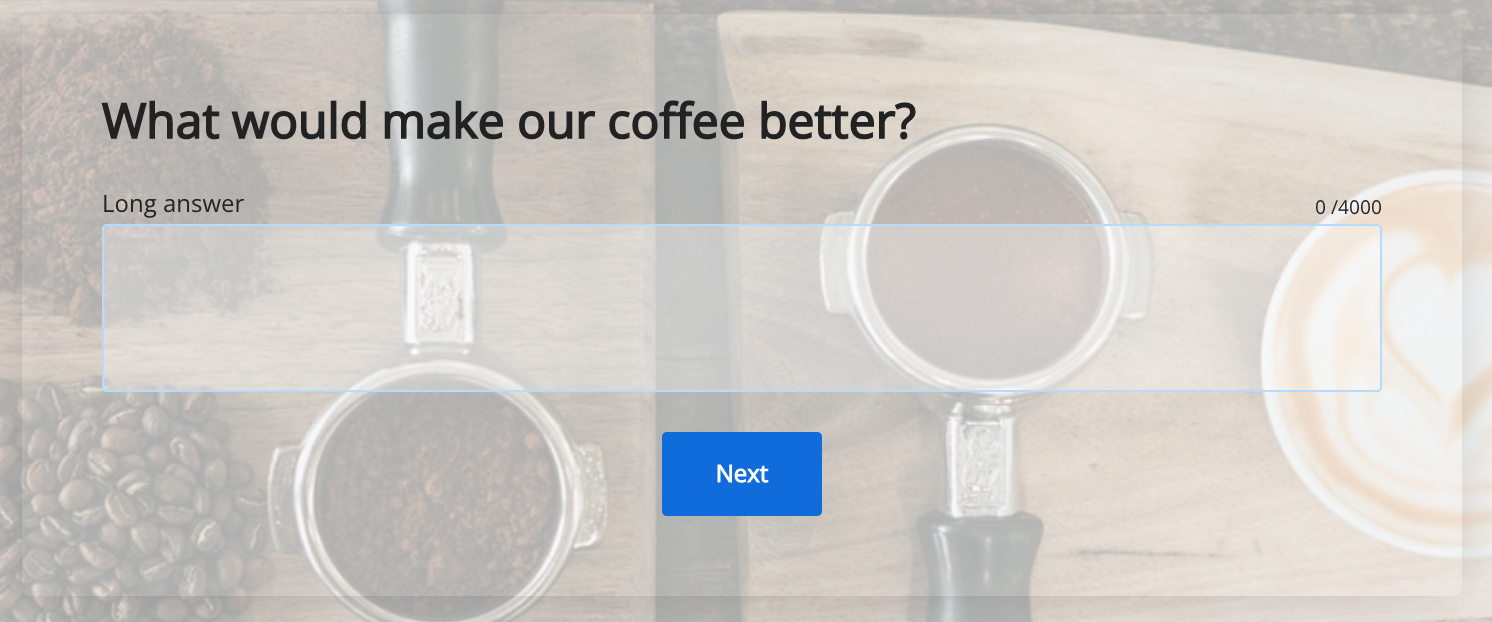

This will help you understand what people dislike about your product, so you can improve it.
Tip: Don’t try to reinvent the wheel – use the same simple pattern. A close-ended question, followed by an open-ended question that clarifies the previous answer works great in most cases.
Of course, to make a survey more beautiful and engaging, you can add image answer options:
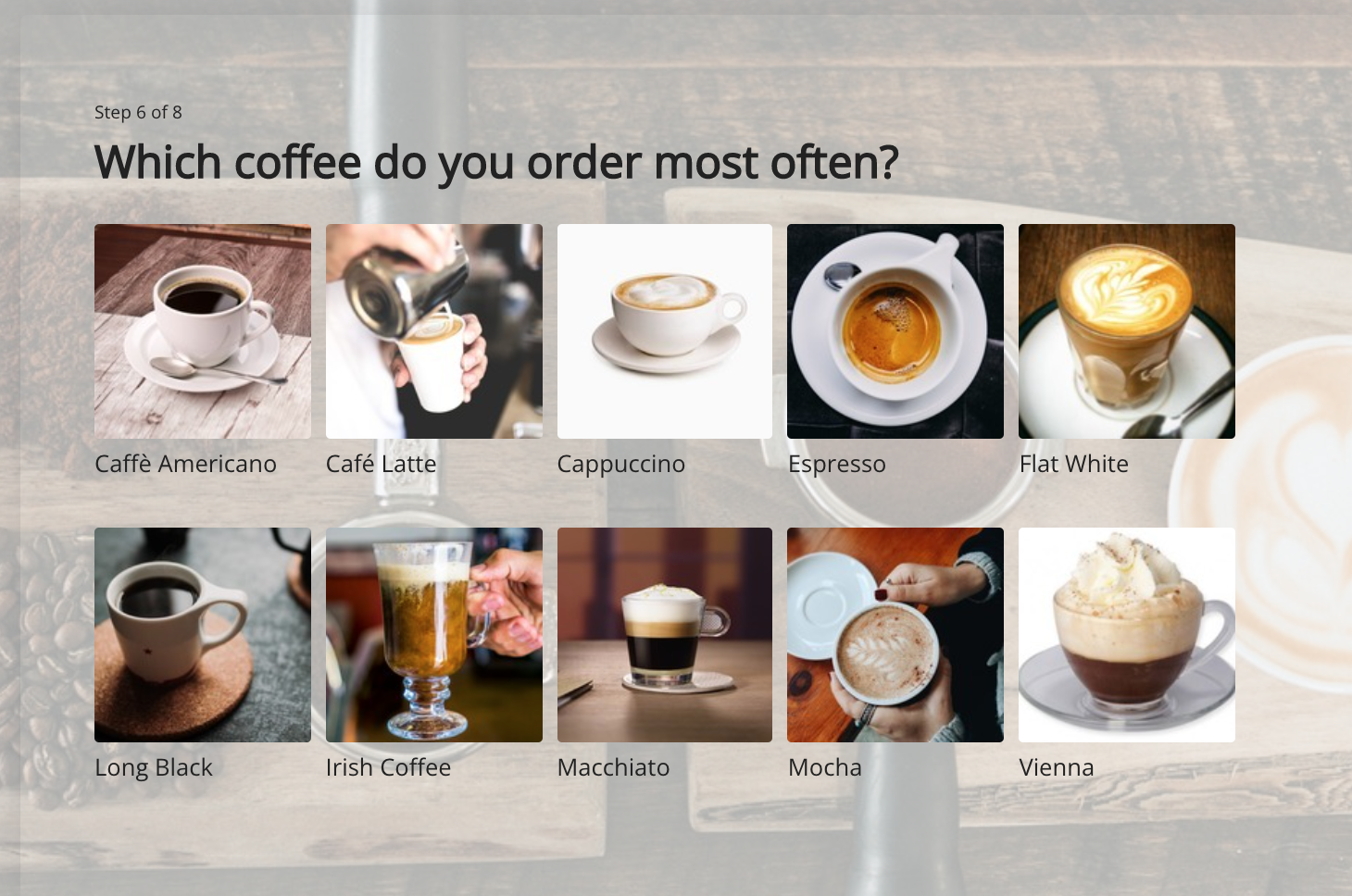

You can also base your questions on the Likert scale or offer multiple choice answer choices.
Form fields
Whether you’re using surveys to generate leads or just to collect responses, it’s almost certain that you would need to gather some respondent data – whether it’s their name, email, country, address, phone number, or something else.
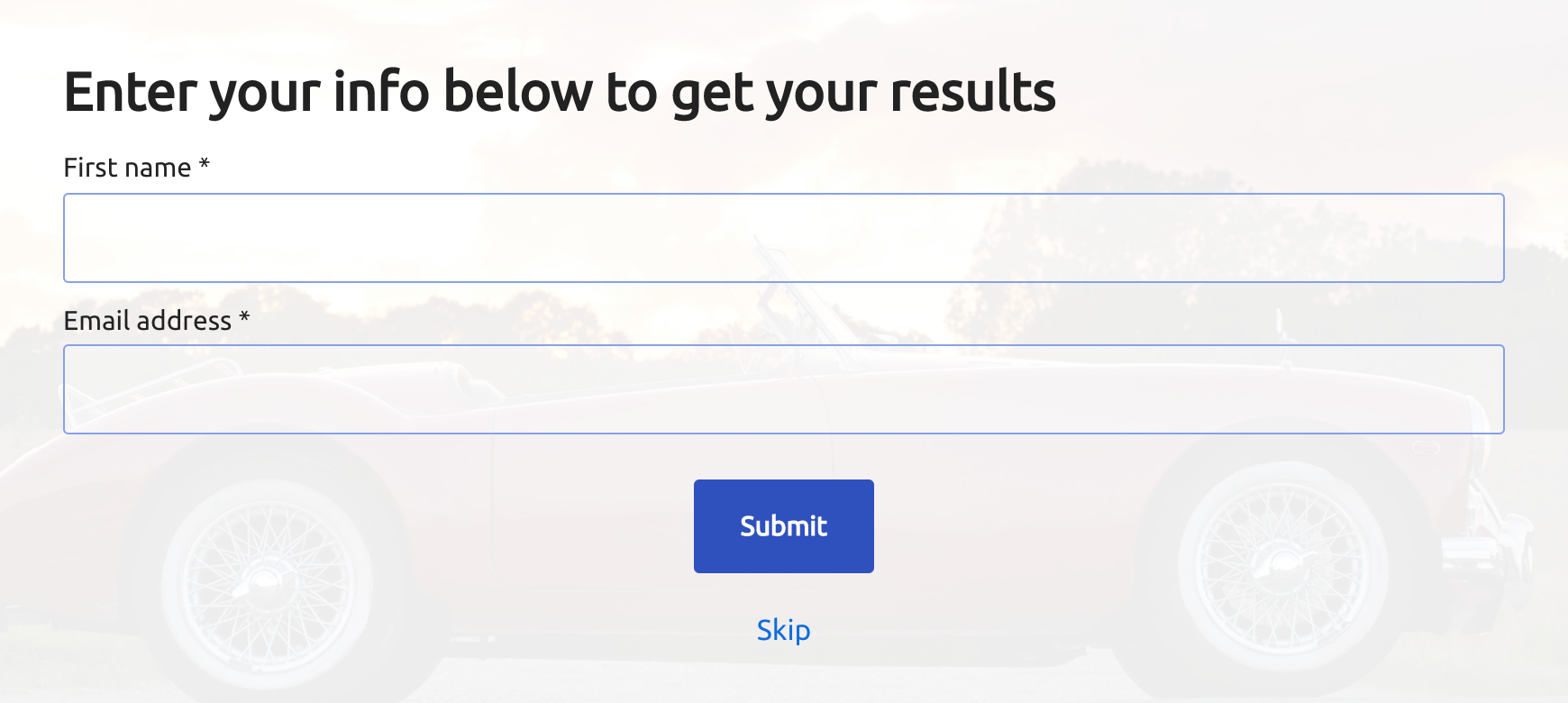

Our online surveys make it easy to add any type of form field to facilitate data collection and analysis. Plus, we have templates for all kinds of registration, sign-up, order, and reimbursement forms.
Thank you/Result page
Finally, after all the questions and answers, this is your opportunity to thank the respondents, inform them about the next steps, and/or show them a certain result or score depending on their answers.
You can keep it as simple as this “thank you” message:


Or you can take it to the next level:


5. Publish and share
Once you’re done with adding all the necessary elements, preview your survey to ensure everything is in its place. If everything looks the way you wanted it, hit publish and you’re good to go!
Now you can easily distribute your survey – share it via email or social media, promote it via Facebook ads, embed it to your web page, or show as a popup or CTA anywhere on your website.
6. Analyze the survey results
Depending on the purpose of your survey, you’re likely to want to turn the obtained data into action. LeadQuizzes has a user-friendly analytics feature that lets you prepare your data for survey data analysis in just a few clicks!
Types of surveys
There are several types of surveys you can create, based on several criteria. Each has its pros and cons, and the type you are going to choose depends on the goal of the survey.
1. Cross-sectional
They are administered at a certain point in time, allowing you to learn what your customers think and do at the moment. For example, this type of survey can help you track the current mood among your customers, or their behavior in limited timeframes, such as the holiday season.
2. Longitudinal
These surveys are conducted repeatedly over an extended period of time. Longitudinal surveys can be divided into trend, panel, and cohort surveys. Trend surveys are conducted with a random sample on a regular basis – weekly, monthly, quarterly, or yearly. They allow you to understand how behaviors change over time and find patterns specific to certain periods.
While trend surveys are administered to a random sample of people, panel surveys are administered to the same group of respondents each time.
Finally, cohort surveys are conducted with a different group of people each time, but they are always a representative sample of a specific group (millennials, cosmetics fans, etc).
3. Retrospective
Retrospective surveys explore the opinions and behaviors of people over an extended period of time, but they are conducted at only one point in time, asking a respondent to recall their past experiences and attitudes.
4+5. Quantitative and Qualitative Surveys
Based on the type of results you are seeking, surveys can be qualitative and quantitative. While quantitative surveys will offer you answers that can be transformed into numbers, tables, charts or graphs, qualitative surveys will provide you with explanations for some of these findings.
Most surveys are a combination of these two approaches. While quantitative questions allow you to test the ideas and predictions and measure general trends, qualitative questions help you explain them, or even find new ideas.
4 Things You Need to Obtain Reliable Survey Results
1. Use the sampling calculator
Let me say it like this – sampling is not a big concern if you are surveying a specific closed group of people, such as your customers, clients or students attending your classes. However, if you want to see, for example, how millennials feel about dip sauces, you want to make sure the sample reflects the larger population. Faulty sampling will lead to incorrect results, turning your survey into a waste of time. More dangerously, acting upon these results could waste your money and business opportunities.
Start your survey creation by calculating the right sample size – you can also read these articles to learn more about sampling and post-survey adjustments.
2. Keep it short, clear, and logical
If you want to get the respondents to stick to the survey until the end, make sure your questions are clear and concise. Use simple language, and avoid putting several questions into one. For example, you could ask a student whether the professor was knowledgeable and fair, offering yes and no as the answers. In fact, him being knowledgeable doesn’t necessarily mean he was fair, and vice versa.
So keep things logical – one question, one answer. Avoid jumping from one topic to another, organize questions logically. If you are surveying your coffee shop customers, it is logical to start off with a question asking about how often they come, then move to the beverage they prefer, and finish with their recommendations for improved offer and service.
Finally, keep your survey short – nobody wants to feel like they are being interrogated against their will. Up to 12 simple questions is quite enough for a small customer survey on a specific issue. If you are conducting a larger survey and need to include dozens of questions, make sure you apply content chunking – split questions in several larger logical sections. Another way to make big surveys more “digestible” is to track progress with a bar or numbers of the remaining questions.
3. Minimize bias in questions and answers
Many surveys are guilty of trying to nudge responses in a certain way. While getting the validation you desire is a great thing, it is pointless if it was the result of biased questions such as “how good is our product?”. Keep the neutral tone in your questions. Maybe even avoid the yes/no questions.
On top of that, you should take into account that respondents also suffer from a bias, especially when answering questions about their personal habits. Sometimes, this is not on purpose. If you are asking people to recall how many times they have done a certain thing in the past few months, you are unlikely to get a 100% accurate answer.
4. Respect respondents’ privacy
Respecting users’ privacy is one of the prerequisites for high response rates. A great way to do that is to make sure your survey is in line with the General Data Protection Regulation (GDPR). GDPR compliance includes:
- seeking permission to use the customers’ data, explicitly and unambiguously
- explaining why you need this data
- proving you need this data
- documenting the ways you use personal data
- reporting any data breaches promptly
- building accessible privacy settings into your digital products and websites
- keeping privacy settings switched on
Non-compliance could cost you a lot of customers, as well as up to $23,4 million or 4% of your global turnover in fines.
Conclusion
“How to make a survey?” is not only a question of assembling a bunch of questions into a questionnaire – in order to get valid responses and quality insights, a survey must be engaging, beautifully designed, ask the right types of questions in the right survey format, and most importantly, you need to have full control over the survey creation and distribution.
Follow the steps explained above and start creating surveys people actually want to take!
